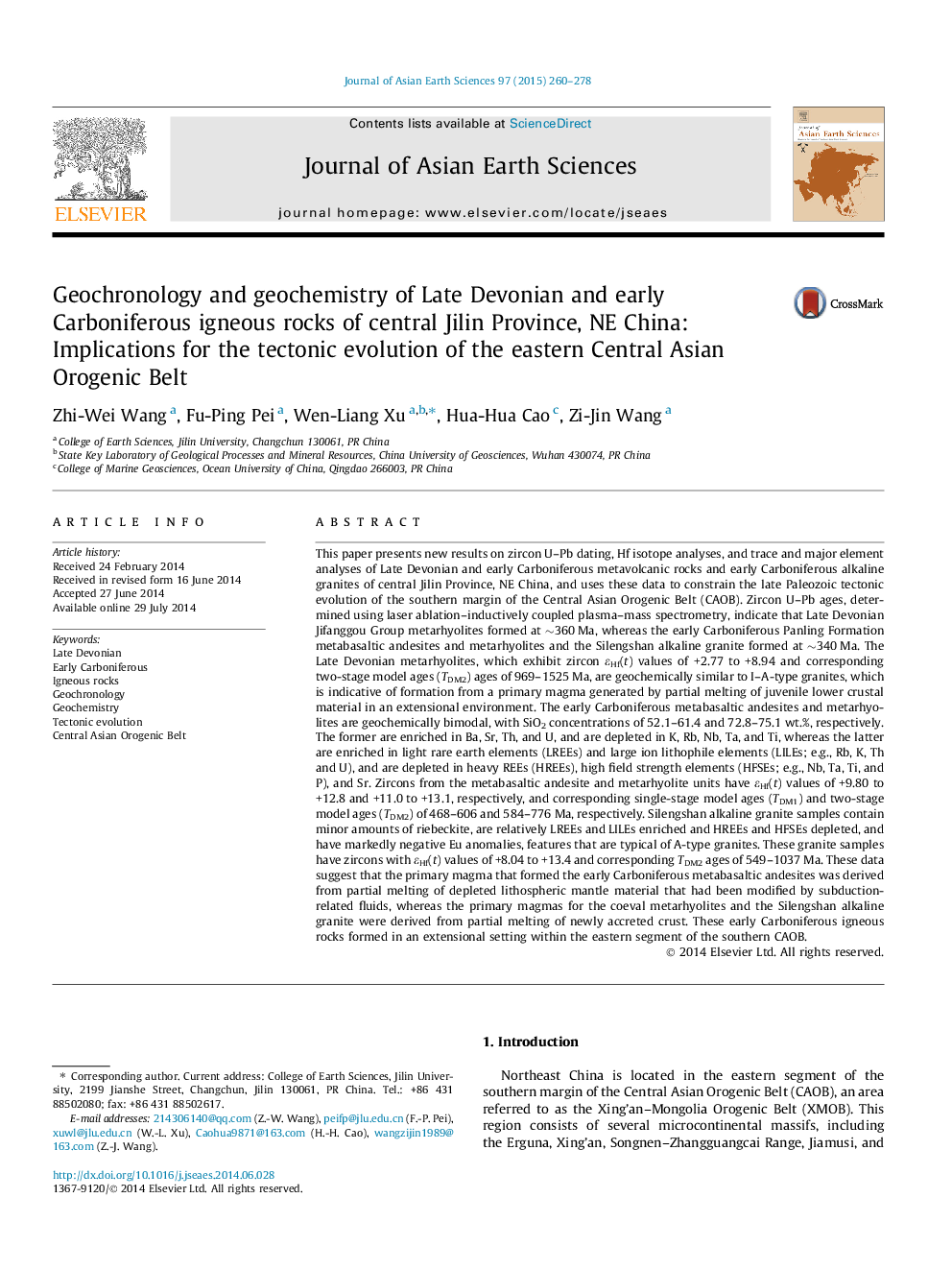| Article ID | Journal | Published Year | Pages | File Type |
|---|---|---|---|---|
| 4730437 | Journal of Asian Earth Sciences | 2015 | 19 Pages |
This paper presents new results on zircon U–Pb dating, Hf isotope analyses, and trace and major element analyses of Late Devonian and early Carboniferous metavolcanic rocks and early Carboniferous alkaline granites of central Jilin Province, NE China, and uses these data to constrain the late Paleozoic tectonic evolution of the southern margin of the Central Asian Orogenic Belt (CAOB). Zircon U–Pb ages, determined using laser ablation–inductively coupled plasma–mass spectrometry, indicate that Late Devonian Jifanggou Group metarhyolites formed at ∼360 Ma, whereas the early Carboniferous Panling Formation metabasaltic andesites and metarhyolites and the Silengshan alkaline granite formed at ∼340 Ma. The Late Devonian metarhyolites, which exhibit zircon εHf(t) values of +2.77 to +8.94 and corresponding two-stage model ages (TDM2) ages of 969–1525 Ma, are geochemically similar to I–A-type granites, which is indicative of formation from a primary magma generated by partial melting of juvenile lower crustal material in an extensional environment. The early Carboniferous metabasaltic andesites and metarhyolites are geochemically bimodal, with SiO2 concentrations of 52.1–61.4 and 72.8–75.1 wt.%, respectively. The former are enriched in Ba, Sr, Th, and U, and are depleted in K, Rb, Nb, Ta, and Ti, whereas the latter are enriched in light rare earth elements (LREEs) and large ion lithophile elements (LILEs; e.g., Rb, K, Th and U), and are depleted in heavy REEs (HREEs), high field strength elements (HFSEs; e.g., Nb, Ta, Ti, and P), and Sr. Zircons from the metabasaltic andesite and metarhyolite units have εHf(t) values of +9.80 to +12.8 and +11.0 to +13.1, respectively, and corresponding single-stage model ages (TDM1) and two-stage model ages (TDM2) of 468–606 and 584–776 Ma, respectively. Silengshan alkaline granite samples contain minor amounts of riebeckite, are relatively LREEs and LILEs enriched and HREEs and HFSEs depleted, and have markedly negative Eu anomalies, features that are typical of A-type granites. These granite samples have zircons with εHf(t) values of +8.04 to +13.4 and corresponding TDM2 ages of 549–1037 Ma. These data suggest that the primary magma that formed the early Carboniferous metabasaltic andesites was derived from partial melting of depleted lithospheric mantle material that had been modified by subduction-related fluids, whereas the primary magmas for the coeval metarhyolites and the Silengshan alkaline granite were derived from partial melting of newly accreted crust. These early Carboniferous igneous rocks formed in an extensional setting within the eastern segment of the southern CAOB.
